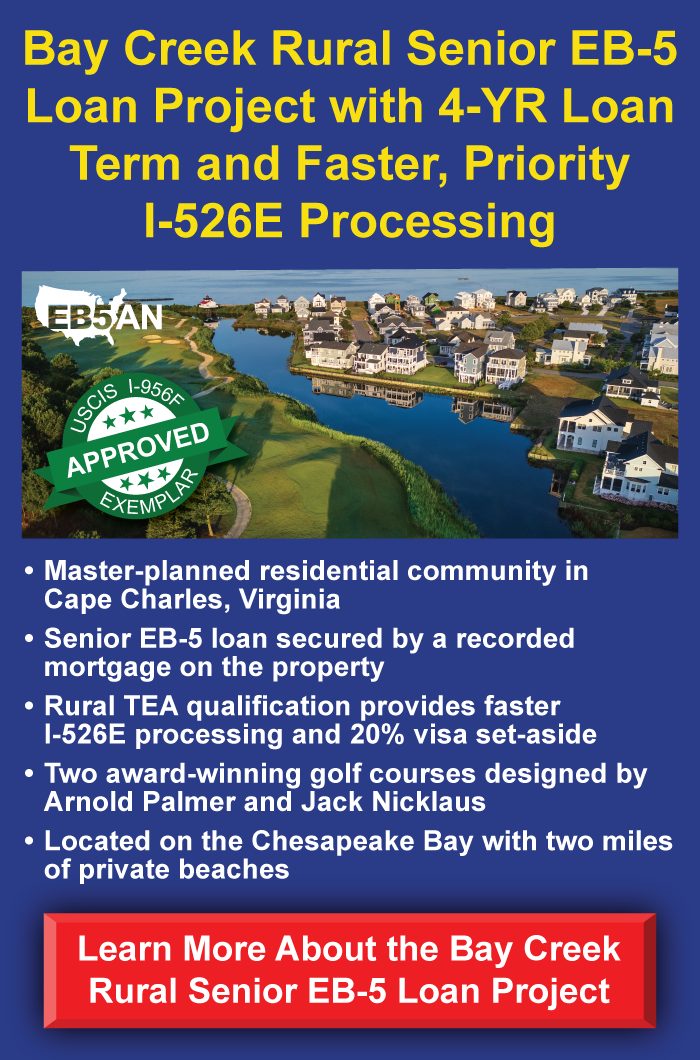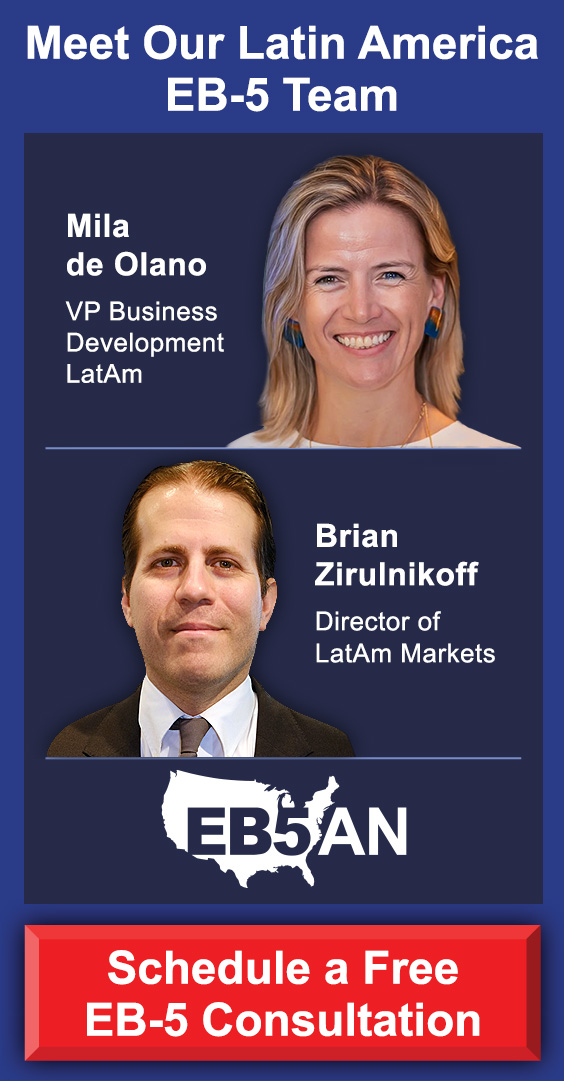When news broke that Amazon is preparing to cut as many as 30,000 corporate jobs, it sent ripples of anxiety through the tech world. For most people, layoffs are stressful. For foreign workers in the United States on employer-sponsored visas, they can be existential. The moment a job disappears, so too can the legal right to live and work in the U.S.
The story of Amazon’s cuts, reportedly the company’s largest since 2022, highlights a broader, uncomfortable truth. The American job market, especially in technology, is volatile. Corporate restructuring, automation, and AI-driven efficiency gains are changing the workforce faster than ever. And for thousands of skilled immigrants, employment instability directly translates into immigration instability.
So what can professionals caught in this uncertainty do? One increasingly discussed option is the EB-5 Immigrant Investor Program, a pathway that allows foreign investors (and their families) to obtain U.S. permanent residency through qualifying investments.
This isn’t a quick fix or a one-size-fits-all solution, but for those who can meet its requirements, the EB-5 program offers something profoundly valuable: independence from employer sponsorship.
The Fragility of Job-Based Visas
The EB-5 Program
Why EB-5 Matters Now
Securing Your Future in Uncertain Times
The Fragility of Job-Based Visas
If you’re in the U.S. on an H-1B, L-1, or other employment-based visa, you already know the fine print: your legal status depends on your job. If you lose your job, in most cases, you have 60 days to find new employment, transfer your visa, or change your status, or you must leave the country.
In a market rocked by layoffs, those sixty days can evaporate quickly. Tech giants like Google, Meta, Salesforce, and now Amazon have all gone through multiple rounds of cuts in recent years. Each announcement triggers the same ripple of panic across Slack groups and LinkedIn posts: “Does anyone have an opening? My visa depends on this.”
For these professionals, immigration law can feel like a trapdoor, invisible until it opens beneath them.
The EB-5 Program
The EB-5 Immigrant Investor Program, created by the U.S. Congress in 1990, was designed to stimulate the American economy through job creation and capital investment. In exchange for investing in U.S. businesses that create at least 10 full-time U.S. jobs, international investors can earn permanent resident status, which means a Green Card for themselves, their spouse, and their unmarried children under 21.
The minimum investment amount depends on the project’s location:
- $800,000 if the project is in a targeted employment area (TEA)
- $1,050,000 for investments elsewhere
Once approved, the investor and their family receive conditional Green Cards valid for two years. If the investment has met the job creation and compliance requirements after two years, they can remove the conditions and transition to full permanent residency.
In short: instead of relying on an employer to stay in the U.S., EB-5 investors rely on their own investment.
Why EB-5 Matters Now
The Amazon layoffs are not just about one company trimming costs. They symbolize a structural shift. CEO Andy Jassy’s ongoing drive to reduce “bureaucracy” and streamline operations, combined with the adoption of artificial intelligence to automate repetitive tasks, hints at a future where human employment in corporate settings could shrink even more.
This is why the EB-5 program has become increasingly relevant. It decouples immigration status from the volatility of the job market. Instead of asking, “Will my employer keep me?” an EB-5 investor asks, “Is my investment meeting the program’s requirements?”
It’s a subtle but powerful shift, from dependency to control.
More Than Just a Visa
Beyond the immediate benefit of stability, the EB-5 visa offers something else: flexibility.
Permanent residents can live, work, and study anywhere in the United States. They’re not tied to one company or city. They can start their own business, buy property, or send their children to public schools and universities, often at in-state tuition rates.
For families thinking long-term, the EB-5 is not just an immigration strategy—it’s a life strategy. It offers a path to eventual citizenship, unlocking all the benefits that come with it: global mobility, access to the U.S. financial system, and a secure legal footing in one of the world’s most stable economies.
In contrast, employment-based visas, even when renewed repeatedly, always carry the shadow of uncertainty.
The Practicalities
The EB-5 route does require preparation, patience, and documentation. Investors must show that their funds are lawfully sourced and fully traceable. This often means collecting years of financial records, business documents, or sale agreements to demonstrate where the investment capital originated.
Choosing the right regional center or project is another critical step. Not all projects are created equal. Some offer solid business plans and strong job creation prospects; others are riskier. Investors should seek guidance from experienced EB-5 attorneys and financial advisors before committing funds.
Timelines also matter. While the EB-5 Reform and Integrity Act of 2022 streamlined some processes, backlogs can still exist for certain countries. Indeed, the January 2025 Visa Bulletin hinted at potential backlogs in TEAs, especially in the high-unemployment category, which may soon no longer be “current.” Once it’s officially reflected in a visa bulletin, it will have significant implications for new investors filing after that point. Especially Chinese and Indian applicants may lose the option for concurrent filing for adjustment of status. Depending on your nationality, you may face waiting periods, so early planning is key.
Balancing Risk and Reward
Of course, no investment, even one connected to an immigration program, is risk-free. EB-5 projects can fail, and capital may be tied up for several years. But the potential trade-off is significant: legal permanent residence in the U.S., with a path to citizenship by naturalization.
The key is due diligence. Prospective investors should research regional centers’ track records, ensure project transparency, and work only with reputable USCIS-approved entities.
The right advisors make a difference. EB-5 attorneys, not just general immigration lawyers, understand the nuances of structuring funds, job creation modeling, and compliance.
Securing Your Future in Uncertain Times
Layoffs are never just about numbers. They are about lives disrupted, dreams deferred, and families facing difficult choices. But they also serve as reminders to plan for uncertainty.
For international employees working in the U.S., especially in industries prone to sudden restructuring, the EB-5 program can be more than a pathway to a Green Card. It can be a buffer against the unpredictable tides of the job market.
As Amazon, and perhaps other companies, continue to reshape their workforces, now might be the time to explore how your financial investments can also become an investment in your legal and personal future.
EB5AN has helped more than 2,700 families from 70+ countries become lawful permanent residents of the United States. Our expert team has more than a decade of experience and offers clients first-rate, low-risk EB-5 regional center projects with a 100% USCIS project approval rate.
If you would like to know more about your EB-5 investment options, book a free call with our expert team today.










